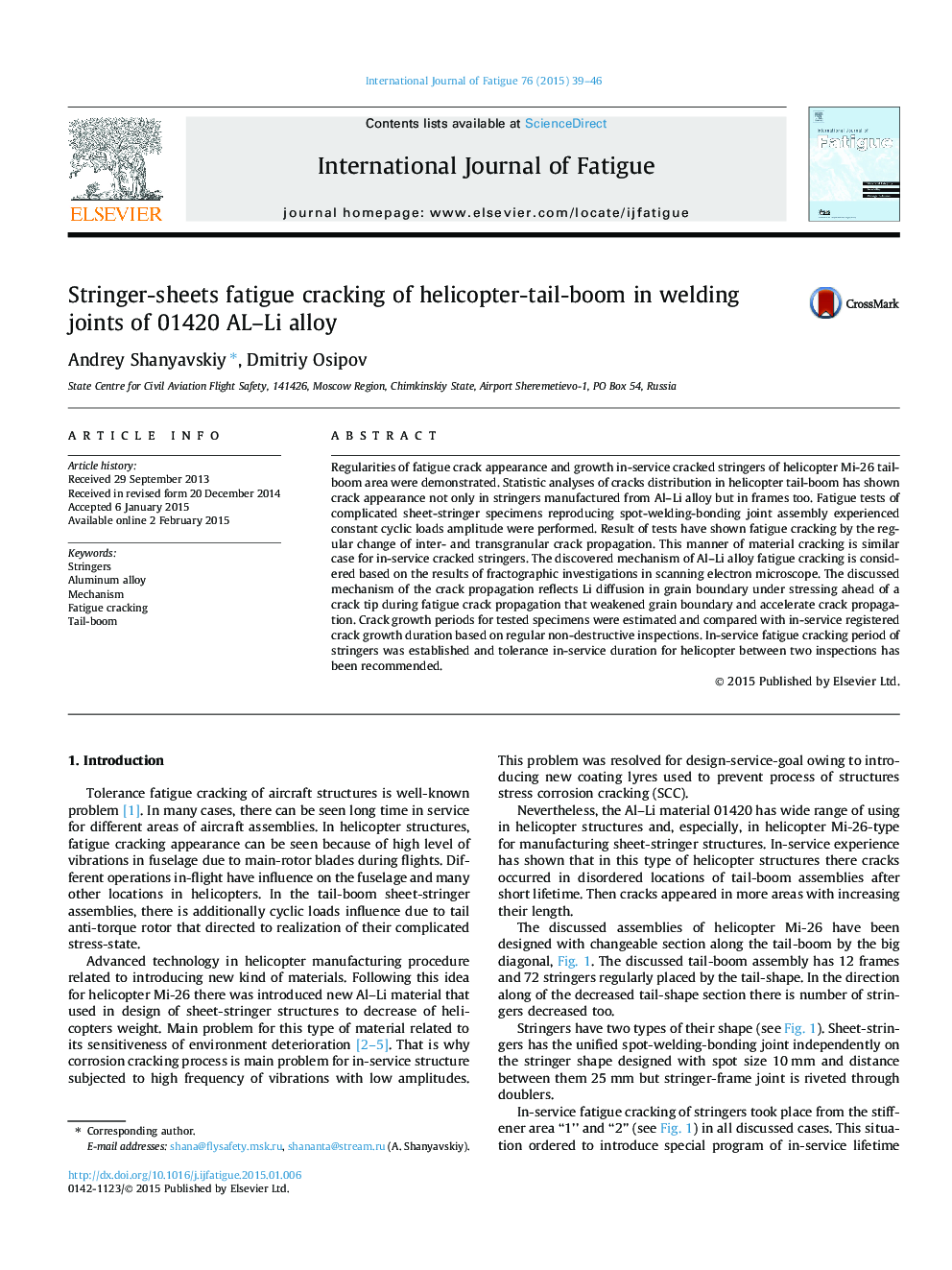| Article ID | Journal | Published Year | Pages | File Type |
|---|---|---|---|---|
| 776627 | International Journal of Fatigue | 2015 | 8 Pages |
•In-service fatigue cracking of helicopter stringers of Al–Li alloy investigated.•Stringers fatigue tests have shown specific mechanism of their fracture.•Based on fractographic analyses new model of Al–Li alloy cracking introduced.•In-service and in-tests stringers had the same crack growth period.•Tolerance helicopter service with stringers periodic inspection was recommended.
Regularities of fatigue crack appearance and growth in-service cracked stringers of helicopter Mi-26 tail-boom area were demonstrated. Statistic analyses of cracks distribution in helicopter tail-boom has shown crack appearance not only in stringers manufactured from Al–Li alloy but in frames too. Fatigue tests of complicated sheet-stringer specimens reproducing spot-welding-bonding joint assembly experienced constant cyclic loads amplitude were performed. Result of tests have shown fatigue cracking by the regular change of inter- and transgranular crack propagation. This manner of material cracking is similar case for in-service cracked stringers. The discovered mechanism of Al–Li alloy fatigue cracking is considered based on the results of fractographic investigations in scanning electron microscope. The discussed mechanism of the crack propagation reflects Li diffusion in grain boundary under stressing ahead of a crack tip during fatigue crack propagation that weakened grain boundary and accelerate crack propagation. Crack growth periods for tested specimens were estimated and compared with in-service registered crack growth duration based on regular non-destructive inspections. In-service fatigue cracking period of stringers was established and tolerance in-service duration for helicopter between two inspections has been recommended.
